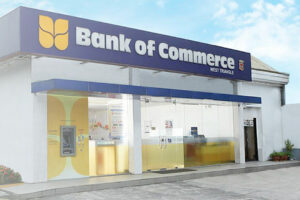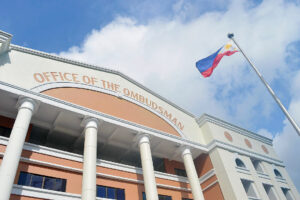New growth drivers seen needed after pandemic economic scarring

THE GOVERNMENT must find new sources of growth following the economic scarring inflicted by the pandemic, the Philippine Institute for Development Studies (PIDS) said.
“The biggest challenge is economic scarring from the pandemic. It (needs to be reversed). Many sectors of the economy have suffered, enduring losses due to closure… there must be new areas of growth to bring the economy to its pre-pandemic path” PIDS Senior Research fellow Margarita D. Gonzales said in a briefing on Thursday.
“There may have been diminished capital, both business and human. In the industrial sector, you can see that in construction, manufacturing, services, accommodation and food, transport and storage, and real estate. Growth has to come from new areas in order for the economy to be propelled to a higher growth path,” she added.
In a report, PIDS projected that growth will slow to 4.5-5.5% this year, below the government’s 6-7% target.
Gross domestic product (GDP) expanded 7.6% last year, surpassing the government’s 6.5-7.5% target band.
“We are forecasting 4.5-5.5% based on the themes, the external headwinds and inflation story. We are sort of now on the pessimistic end. The reason we have a lower target than the government is they were penciling an investment surge which they anticipate because of the Corporate Recovery and Tax Incentives for Enterprises (CREATE) Law and lowering of taxes. That’s where we differ,” she added.
Ms. Gonzales said that the growth this year will be impacted by continued elevated inflation, a challenging business environment, and limited fiscal space this year.
“Higher consumer prices have reduced the purchasing power of households, while higher input costs are pressuring businesses, especially those with already thin margins and low net worth. This may continue to dampen private consumption and investment appetite,” she said.
Inflation accelerated to a 14-year high of 8.7% in January from 8.1% in December, marking the 10th consecutive month that inflation was above the central bank’s 2-4% target range.
PIDS expects inflation to ease to 3.5-4.5% this year. The government sees inflation averaging 4.5% in 2023.
“We are also looking at the business environment, which has become more challenging due to higher financing and business costs and economic uncertainty. Businesses are still recovering from the pandemic and may be more cautious given a new political leadership. Recent reforms to liberalize investment may take time to bear fruit,” she said.
“The final limiting factor is the policy space to counter an economic slowdown. The central bank is constrained to keep monetary policy tight to fight inflation. Meanwhile, the rise in fiscal deficits and public debt due to the pandemic has pressured the government to pursue fiscal consolidation,” she added.
The National Government’s outstanding debt stood at P13.42 trillion at the end of 2022, bringing the debt-to-GDP ratio to 60.9%.
In the 11 months to November, the government’s budget deficit contracted 7.2% from a year earlier to P1.24 trillion.
She also noted other risks such as the deterioration in global financial conditions, the looming recession in the US and the continuing conflict between Russia and Ukraine.
On the other hand, bright spots this year are resilient remittances, business process outsourcing (BPO) receipts, and a boost from tourism and investment.
“Remittances may remain strong because of the demand for healthcare workers due to the pandemic and BPO receipts may similarly remain strong given the need for digital workers in a post-pandemic world.”
Ms. Gonzales recommended policies that “control inflation without harming growth. inflation must be controlled as it creates instability and worsens poverty, but this should be done without stifling the economic recovery.” She cited targeted support to cushion the effects of inflation and supply-side reforms to raise productivity.
“Another thing we want to highlight is smoothening exchange rate volatility. Sharp peso depreciation must be avoided as it makes the fight against inflation more difficult, may harm balance sheets of firms, and heightens business uncertainty,” she said.
“Given external headwinds, there’s a need to prepare for financial tightening and uncertainty. Financial tightening in advanced economies can spill over to emerging markets like the Philippines and can multiply financial risks. Financial regulators should stay vigilant of threats to financial stability through close monitoring of banks through various asset quality and capital adequacy indicators,” she added.
Fiscal sustainability must also be pursued while being mindful of the most vulnerable members of society, Ms. Gonzales said.
“While fiscal space must be rebuilt, the government should protect those suffering from elevated inflation and the pandemic’s lingering effects,” she added.
Philippine Chamber of Commerce and Industry (PCCI) Secretary General Ruben J. Pascual said infrastructure development could be key to boosting growth.
“It cannot be overstated that the productivity losses from the pandemic have to be reversed. An immediate way to do this is to continue the prioritization of infrastructure spending, which helps address scarring by enhancing the country’s physical capital, boosting long-term growth, while also having short-run multiplier effects,” Ms. Gonzales said.
“High potential areas include infrastructure for more efficient trade, better digital connectivity, and clean energy, especially where private sector participation is viable,” she added.
Bank of the Philippine Islands (BPI) economist Rafael Alfonso Q. Manalili said that improved infrastructure will attract more investment.
“We need to reduce the cost of producing goods, and to do that, we need to improve infrastructure. Especially in energy; we have among the highest interest rates (and transport costs) in the region. It’s feasible for us to improve on that,” he said.
“Infrastructure is one of the main reasons foreign investments are not entering the country. There’s still a lot to do particularly in energy. Internet connection is also quite low. If we are banking on BPO outsourcing, we need to invest and improve in internet connectivity, particularly as the market is going towards digitalization. Infrastructure development is the main solution,” Marites B. Oliva, Department of Finance assistant chief economic counselor, said.
“Becoming a first world country is not far-fetched. Economies like Dubai and Vietnam liberalized foreign investment, constructed critical infrastructure and lowered the cost of power. These countries also invested in soft infrastructure to create a highly productive labor force. Becoming a first world economy is doable if only we can get our act together. As a country, we have to decide we want to be a first world economy,” the PCCI’s Mr. Pascual added.
PIDS also said there needs to be continued policy momentum to attract foreign direct investment (FDIs).
“The Philippines had perennially lagged in attracting FDI. The government should continue to remove impediments to FDI by addressing the country’s inadequate infrastructure, expensive power, slow internet,” Ms. Gonzales said.
BPI’s Mr. Manalili concurred in the need to diversify growth drivers.
“We need to go beyond household consumption and services for us to recover much faster and survive another pandemic, if that happens. The economy has been driven by remittances, consumption and services. It’s good because these are strong sources of growth, but the pandemic has taught us we need to diversify so we can have additional cushions in case another shock happens,” he said.
Mr. Pascual also called for more support for micro, small, and medium enterprises (MSMEs).
“One of the most heavily affected sectors is the MSMEs, which suffered from shutdowns and business closures. The MSMEs were among the hardest hit during the pandemic. They comprise 99% of businesses and 70% of total employment. The government should prioritize the recovery of MSMEs to ensure long-term growth potential. MSMEs are not on the consciousness of many policymakers in the country,” he said. — Luisa Maria Jacinta C. Jocson




